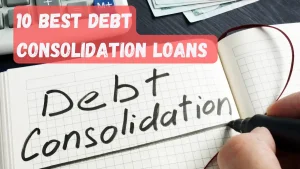
How to Buy a House Using a Mortgage
You can buy a house without having the whole sum of money to purchase the house by using the concept of Mortgage and Mortgaging.
In this article, you’ll learn how to buy a house using a mortgage. Here, let me teach you how. First, understand how it works.
Understanding Mortgages – What is a Mortgage?
A mortgage is a type of loan you borrow to buy a house or to refinance your existing home. By getting a mortgage, you do not need to pay the entire price of the property in one full payment but agree to make payments on that loan for a set number of years until the value of the home is paid off.
Example: Suppose there’s a house worth $500,000 in a suburban area that you want to buy. But you have only got a total sum of $100,000 in your bank account, and you are still desperate to buy the house. That’s where the mortgage comes in.
You can put your own money of $100,000 which is 20% of the initial house cost (also known as the Down Payment), and let the bank put the rest of $400,000 as a mortgage loan.
Here, Mortgage amount = $400,000,
Down Payment = $100,000 i.e., 20% of House Price.
You use the mortgage in addition to your down payment to buy a home.
Also, a Mortgage includes the principal, interest rate, loan term, and required mortgage insurance. Some lenders (banks) also require you to include your real estate taxes and home insurance in the payment.
Finally, the house is yours. You have to keep paying the monthly down payment to the bank for a period of years until the amount is fully paid. You can calculate the monthly payable amount using a mortgage calculator.
» Related: What is Real Estate Financing: An Introduction
What’s the catch for lenders?
You might be wondering; how would those lenders/banks be so secure that you will be paying back the loan?
Here’s the answer.
Lenders use your house as collateral. If you default on your payments (usually more than 90 days), they can foreclose on your property. The bank then takes the house and sells it to make back the money lost from you for not making your payments. That way they get their money back.
So, a Mortgage is basically an agreement between you and your lender that gives the lender the right to take your property if you fail to repay the money you’ve borrowed, along with the interest.
Also, the lenders are a step ahead and don’t just keep giving mortgage loans to anyone. Lenders base your eligibility on your credit score, current debts, money saved, and the home’s value to give out the loan.
Tip: The difference between a mortgage and a standard loan, besides the loan amount, is the collateral.
Terms You Need to Know to Understanding Mortgages & Mortgaging
Also here are a few of the terms you need to know to understand the concept of mortgage and house buying using it.
1. House Price
The house price is the cost of the property that the house seller and the buyer agree to deal on. Normally, the house price varies by location, size of the home, and land, as well as the quality of the house and improvements made to the property. The prices also fluctuate with the real estate market. The price of the house will determine the mortgage loan amount as well as the down payment.
» RELATED: How To Become a Property Manager With No Experience
2. Purchase Price
The purchase price is the price you agree to pay for a house with the seller. Whether the seller accepts your first offer or you go back and forth, the purchase price is the final number you agree on and that is written on your sales contract. Lenders use this number as a baseline when determining your mortgage amount.
3. Down Payment
A down payment is a percentage of the value of the house that is made upfront in a lump-sum cash payment. It is the money you invest in the home initially.
For example, if your purchase price is $100,000, a 5% down payment would be $5,000 and a 20% down payment would be $20,000.
The down payment when purchasing a home varies depending on the price of the home and the financial ability of the homebuyer to pay. The standard down payment percentage is 20%.
4. Principal
The principal is the actual amount/balance of the loan excluding any interest payments, taxes, or insurance. It is the original amount that was borrowed from the lender and had interest applied to it as well as other costs of borrowing such as taxes and PMI.
The principal will be the amount of money you must pay until the loan is completely paid off, however, due to the amortization schedule, the initial payments are directed toward the interest before they are to the principal.
5. Interest Rate
The interest rate, also known as a mortgage rate, is the rate of interest that is charged on the mortgage. It is the fee the bank/lender charges monthly until you pay the loan in full. They provide you with an annual interest rate, but you can figure out the monthly rate by dividing the annual rate by 12. As you pay your principal balance down, you’ll pay less interest.
The interest rate on a home loan can be fixed or variable, fluctuating with the current mortgage rates. Mortgage rates will vary for each borrower as they are heavily influenced by the homebuyer’s credit profile. As mortgage rates fluctuate with the real estate market, you can refinance your loan at a lower interest rate at a point in the loan term.
6. Loan Term
The loan term, also known as the Amortization Period is the number of years you will be making your monthly mortgage payments toward your loan.
It is the time you have to pay the loan back. Most borrowers take out a 30-year term, but there are other options including a 10, 15, and 20-year term. The less time you borrow the money, the lower the interest rate a lender will charge.
The loan term may change during the loan life depending on whether the buyer decides to refinance the loan, make additional payments, or make more than the minimum monthly payment.
Loan terms depend on the lender, interest rate, and preference of the home buyer.
7. Property Taxes
Property taxes are based on the value of the property including the land; they are the percentage of your property’s assessed value.
Property taxes are paid by the owner of a home or property and are calculated & collected by the local government where the house is located. All US counties charge property tax. These taxes are then used to fund services such as law enforcement, highway construction, and education.
You can find out the taxable amount by visiting the county assessor’s website. Many mortgage lenders require you to pay your taxes monthly with your mortgage payment to make sure they are paid.
» Also Read: Real Estate Financing Options
8. Mortgage Insurance
Mortgage insurance is the insurance for the lender. Borrowers pay it, but it is for the lender if you default on the loan. Conventional loans require mortgage insurance if you put down less than 20% on the home. You can cancel it once you pay your balance down to 80% of the home’s value.
Government loans, including FHA and USDA loans, charge mortgage insurance for the life of the loan, but at a rate lower than conventional loans. Mortgage insurance helps borrowers secure a loan when they don’t have great credit or don’t have much money to put down on the home.
9. PMI
PMI stands for Private Mortgage Insurance and only applies to conventional loans. If you put down less than 20% of the purchase price, the lender will require PMI until you owe less than 80% of the home’s value. If you default on your loan (for over 90 days), the lender can make a claim with the insurance company, foreclose on your home, and get back a portion of the amount they lost.
10. Mortgage Calculator
A mortgage calculator can help you determine how much house you can afford and estimate your payments. It’s a great tool to use before you shop for a house or before you refinance. See what your monthly payments would be and how different factors affect it.
How to Calculate a Mortgage Payment?
Here’s a mathematical equation to help you calculate the mortgage payments:
The equation for mortgage Payments

Symbol
M – Monthly mortgage payment
P – Principal is the amount you borrow.
r – monthly interest rate
n – no. of payments over the loan’s lifetime (convert it to months by multiplying years by 12 eg: 30-year period = 360 payments (30×12=360)
Your mortgage payment includes principal, interest, also the additional costs of mortgage insurance, real estate taxes, and homeowner’s insurance are added further.
How Much Mortgage Can I Afford?
Lenders determine how much mortgage you can afford based on your income, credit score, and current debts. Each situation is different but in general, lenders allow up to a 43 – 50% debt-to-income ratio. Your mortgage (principal, interest, real estate taxes, home insurance, and mortgage insurance) plus any existing debts, such as credit cards, car loans, or personal loans shouldn’t exceed 43% – 50% of your gross monthly income (income before taxes).
Tip: Always get help from a Mortgage Broker for better deals even if might cost a little. Learn the benefits of working with a Mortgage Broker.
The Final Words
Finally, decide how much house you can afford to buy a house using a mortgage
If you’re not sure how much of your income should go toward housing, follow the tried-and-true 28/36 percent rule.
Many financial advisors believe that you should not spend more than 28 percent of your gross income on housing costs, such as rent or mortgage payments, and that you should not spend more than 36 percent of your gross income on overall debt, including mortgage payments, credit cards, student loans, medical bills and the like.
Here’s an example of what this looks like:
Brian makes $60,000 a year. That’s a gross monthly income of $5,000 a month. $5,000 x 0.28 = $1,400 total monthly mortgage payment (PITI)
https://www.bankrate.com/mortgages/mortgage-calculator/#how-much-can-afford
Brian’s total monthly mortgage payments — including principal, interest, taxes, and insurance — shouldn’t exceed $1,400 per month.
That’s a maximum loan amount of roughly $253,379. While you can qualify for a mortgage with a debt-to-income (DTI) ratio of up to 50 percent for some loans, spending such a large percentage of your income on debt might leave you without enough wiggle room in your budget for other living expenses, retirement, emergency savings, and discretionary spending.
Lenders don’t take those budget items into account when they preapprove you for a loan, so you need to factor those expenses into your housing affordability picture for yourself. Once you know what you can afford, you can take financially sound next steps.
The last thing you want to do is jump into a 30-year home loan that’s too expensive for your budget, even if a lender is willing to loan you the money.
Source: Bankrate.com
» READ MORE
- Real Estate Investment Strategies
- Good and Bad Credit Scores
- What is Peer to Peer Lending?
- Paying off Student Loan Debt Quickly
- How To Become a Property Manager With No Experience
FAQ – Buy a House Using a Mortgage
Can I buy another house with a mortgage?
Yes, But first get approved for another mortgage.
When you plan to keep both homes long-term and already have a down payment Perhaps the simplest and most familiar strategy for buying another house is to apply for a new mortgage. In this strategy, a bank approves you to hold two separate mortgages simultaneously.


